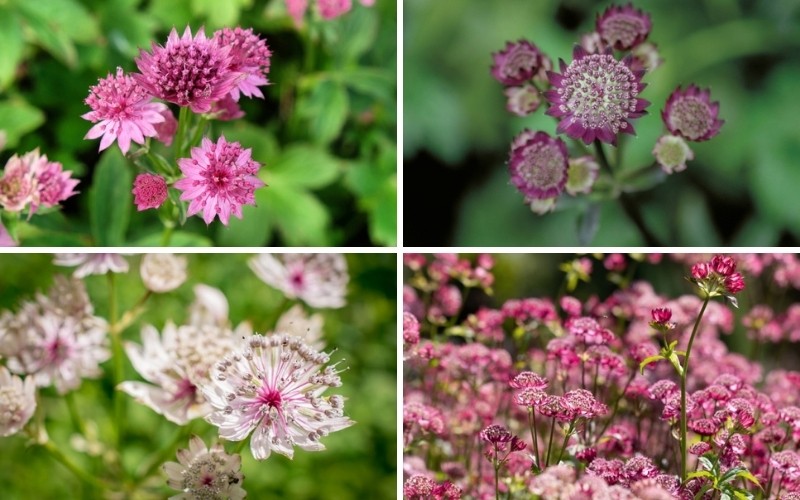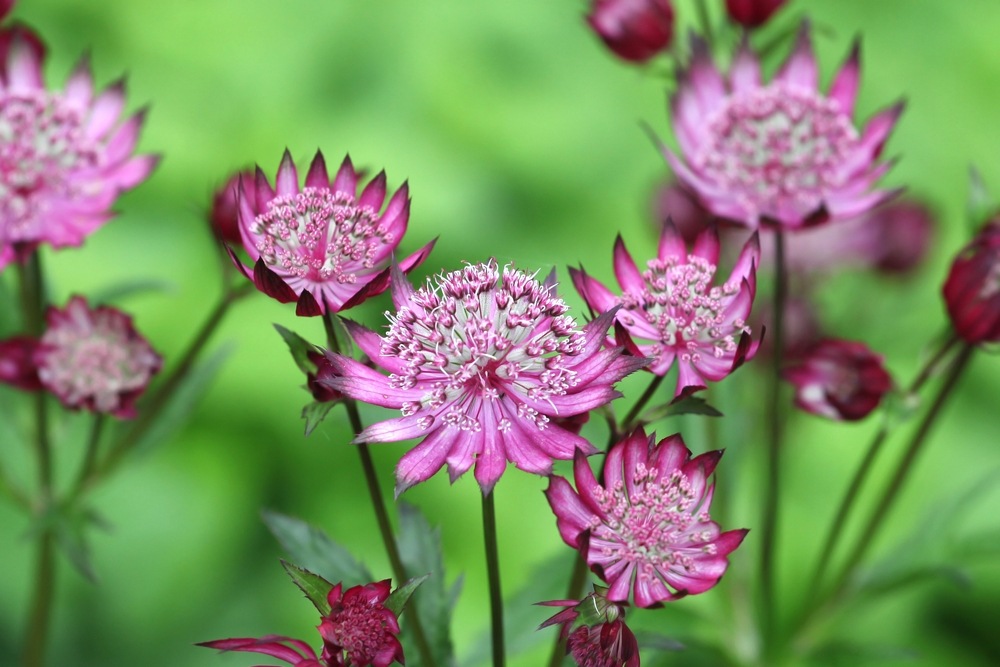
This delightful flower is ideal for woodland or shade gardens. It can be used at the back to create a colorful background to other flowers, to line walkways, or to fill in shady nooks in your yard.
It can also be grown around water gardens, ponds, or streams, as it loves moist soil. Masterwort will thrive in areas that are too wet for most other perennial flowers.
Its small, muted flowers contrast well with other shade-loving plants like hostas and ferns and are an effective way to fill in blank spaces.
The flowers range from white and pink to red, purple, and green, while the foliage is a frilly green.
While they add color and texture to the flowerbed and add subtle color, they are not dramatic flowers suited as specimen plants.
| Botanical Name: | narcissus sppAstrantia spp |
| Common Name(s): | Masterwort, Hattie’s Pincushion |
| Plant Type: | Herbaceous Perennial |
| Mature Size: | 1 to 3 feet |
| Sun Exposure: | Partial Shade to Shade |
| Water Needs: | Needs Moist Soil |
| Soil Type: | Organic Rich |
| Soil pH: | Slightly Acidic |
| Bloom Time: | Summer through Fall |
| Maintenance: | Medium |
| Flower Color: | White, Pink, Red, Purple, Green |
| Hardiness Zones: | 4 through 9 |
| Toxicity: | nontoxic |
Light
Masterwort prefers morning light with shade during the afternoon. It will thrive in dappled or filtered light throughout the day. It suffers from the afternoon sun, particularly in warmer climates.
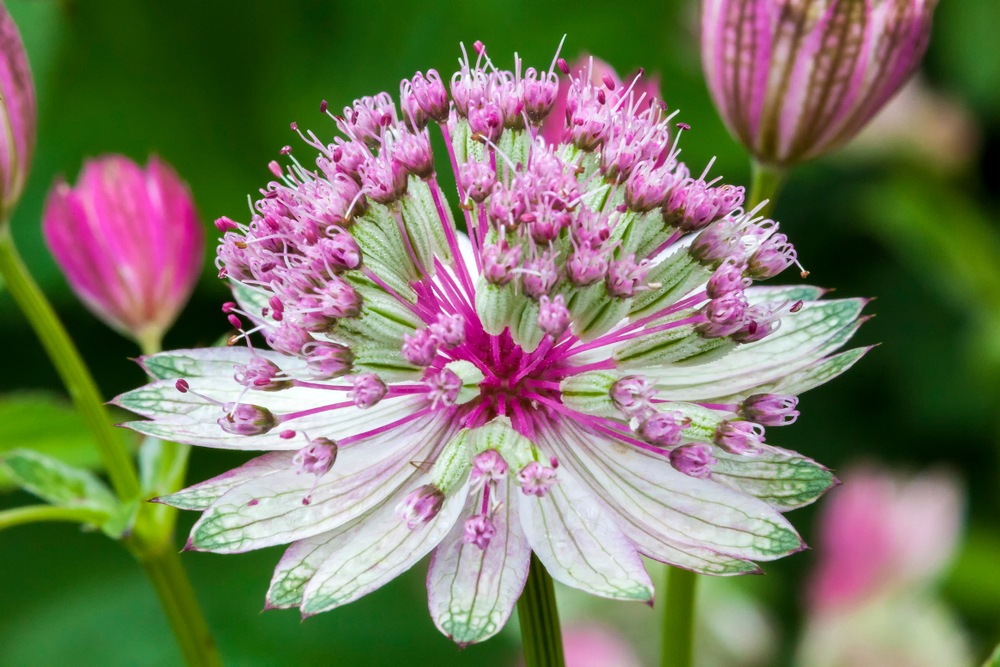
Water
Masterwort loves moist soil and will even tolerate some standing water. It does not perform well in dry soil and needs consistent watering to keep its roots moist and happy. The soil should not dry out completely.
Temperature & Humidity
Masterwort thrives in cool climates and prefers temperatures that dip below 70 degrees at night. Avoid planting masterwort along foundations or large boulders that absorb and hold the heat from the afternoon sun. It can tolerate more sun In cool climates where temperatures remain below 75 degrees during the day but otherwise suffers in the afternoon sun.
Soil
Plant masterwort in slightly acidic to neutral, humus-rich, organic soil that retains water well. This should not be confused with heavy clay soil that retains moisture and dries out excessively in dry weather. Add compost, peat moss, or well-rotted manure to the soil before planting your masterwort.
Masterwort also benefits from mulch around the plants to help retain moisture and prevent the soil from drying out.
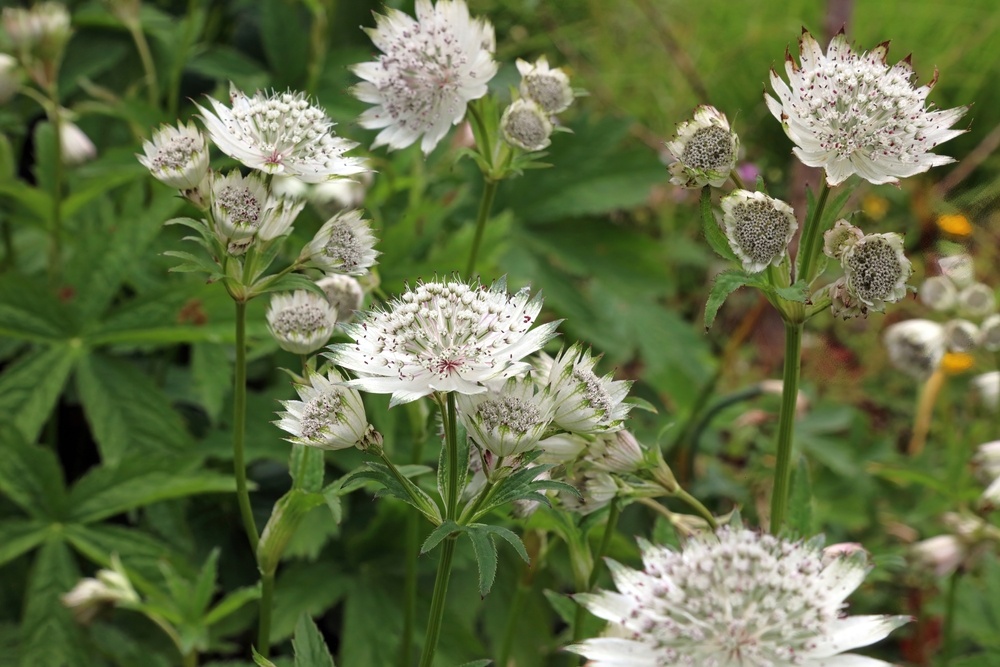
Fertilizer
Masterwort does best when it is fertilized with a balanced fertilizer in the spring when new growth appears and then again in midsummer. Alternatively, you can dilute liquid fertilizer to ¼ strength and apply it once every 10-14 days.
Masterwort grown in containers typically benefits from fertilizer once or twice a month as the nutrients can leach through the bottom of the pot or container.
Are they Toxic?
Masterwort is non-toxic to humans and pets.
Potting
Matstewort can be grown in containers but will need added protection to prevent the roots from freezing in the winter. You can either insulate the container or move it inside to a garage or shed that remains above freezing for the winter.
Mix equal parts of all-purpose potting soil, peat moss, and compost with a handful of perlite to make humus-rich soil for your plants. Water the container frequently to prevent the soil from drying out completely.
Deadheading and Pruning
Deadheading the spent flowers from your motherwort plants may not be necessary, but it will improve their appearance and extend the blooming season. Clipping off the faded flowers tricks the plans into thinking that it has not grown enough flowers (and seeds) to reproduce. This results in a flush of new blooms.
Dividing Masterwort
Like other perennials, masterwort can become overcrowded and may need to be lifted and divided every three to five years.
Divide masterwort in the spring as soon as new growth begins. Use a garden spade or fork to dig under the entire root system and lift it from the soil. Pull the sections apart with your hands (or cut them with a sharp knife, if necessary) and replant them in a location with similar growing conditions.
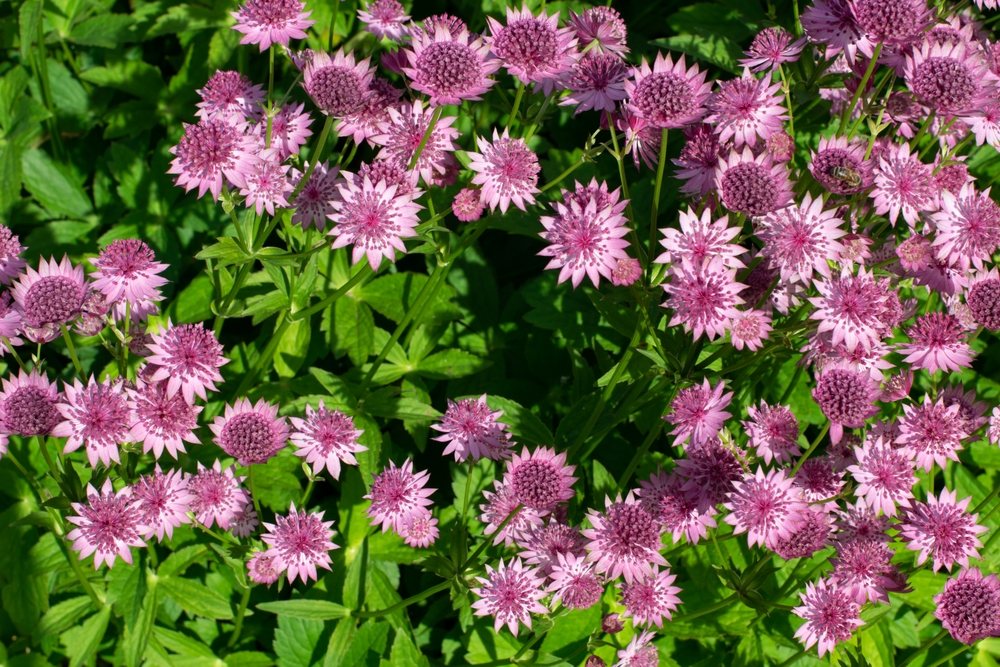
Frequently Asked Questions:
How do you propagate masterwort (Astrantia)?
Masterwort can be lifted and divided in the spring. Replant the divisions in a new location with similar growing conditions.
You can also collect seeds from the plants in late summer and replant the seeds. The seeds will germinate and grow the following year.
Is Astrantia (Masterwort) invasive?
Masterwort does not invade new areas via underground roots, but it tends to self-seed and may spread to new flowerbed areas via seeds.
Do Astrantia seeds need cold stratification?
The seeds from Astrantia need exposure to cold temperatures for four to six weeks to spur germination. You can either plant the seeds in the fall or cold-stratify them yourself by placing them in the refrigerator for a month or two before planting the seeds in the spring.





